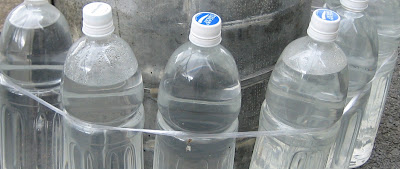
With 30+ degrees warm outside and summer in full swing, this might be a weird time to be thinking about last winter. But I find myself reflecting on Japanese houses and Japanese weather just as much now as I did then. Before I return to the present, I felt like going back in time to early January, when profuse sweating and air conditioner colds were distant inconveniences, not to be feared.
Coming from a northern country with long winters, I continue to be amazed by Japanese houses in the chillier months.
They are cold. Man, are they cold.

When you go live abroad for a while, you soon realize that there are many things we take for granted just because that's how it's always been where we grew up. Some of the things I took for granted were double glazing, walls thick with insulation, and water-circulated central heating. Though temperatures below freezing are the norm in December through February, I have rarely felt uncomfortably cold in a Swedish house.
In Japan, I am cold every day in winter. Indoors, that is.
Why? No mystery there. The walls of my tiny apartment are thin, an entire wall of the bedroom/living room is made of single-layer glass, there's a vent in the kitchen that's basically a five-by-five centimeter wind tunnel, and cold air falls down through the ceiling-mounted bathroom fan, turning the unit bath into a serviceable backup refrigerator. There's no hot water central heating of course, only the standard air-conditioning unit that, at a cost, will make the top forty or fifty centimeters of your room very warm and comfortable, while your feet are freezing.

Still, the apartment is small and it doesn't take too much to bring it to temperatures where man can exist comfortably, say, around 20-22 degrees. I met with a different level of challenge last 年末年始 (nenmatsunenshi, "end-of-the-year start-of-the-year"), which I spent in a wintry Fukuoka.
The house I stayed in was a solid enough-looking wooden structure, built in 1995. Open space two-story living room with exposed beams combined with sliding paper doors and tatami floor rooms. Wall of glass looking out over the garden. Pretty.
And bitingly cold.
Sometimes around 6 or 7 degrees Celsius in the early morning.
So, how do you cope with this kind of indoor climate?
How do you survive a Japanese house in winter-time?

This picture of the famous Japanese bathing monkeys in Nagano
I have borrowed from wikimedia.org, here.
My research suggest at least five major strategies to be useful.
- Use multi-layer clothing
My preferred four-layer combo: short-sleeved T, long-sleeved T, light turtleneck sweater, heavy turtleneck sweater. Long johns if you have them. Slippers and thick, extra socks, of course. - Employ kerosene heaters
These are your friends. Messy to refill and a bit noisy, but as long as they're burnoing you can feel somewhat uncold. Also good for heating eater and grilling mochi (solid rice flour balls). - Stay near kotatsu tables
These are lovely things. Equipped with their own heater and attached thick blanket. So cosy. Problem is, they make you incredibly lazy. You never want to leave them. Oh, and don't fart under the kotatsu. Just don't. - Take long, hot baths
If you don't have your own monkey hot spring, use the thermostat-heated bath that the house is sure to have. It's a good way to drive the chill from your bones. It's just a pity that it's going to be so cold once you get out. Wash before you get in, you're going to share it. - Don't scoff at hot water bottles, or pajamas
You need them. The bed or futon you'll be sleeping in will have adopted the same freezing temperature as the room, which has probably been closed off during the day. Putting a hot water bottle in there, and your PJs right next to it, makes going to bed less of an ordeal. Thinking ahead is key.













































